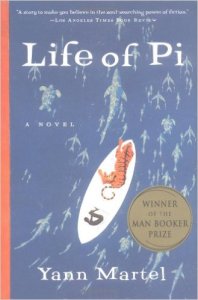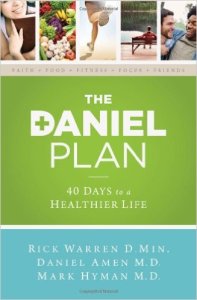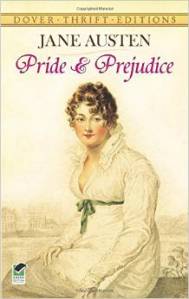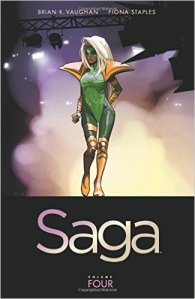I’m conflicted about this book. I don’t know whether I hate it or like it. Whether it’s brilliant or pretentious. And whether I’m spending too much pondering all of this. I’m trying to revamp the book list for my multi-cultural literature course and I’ve seen The Life of Pi on several lists. So on a long road trip up to Northern Michigan I thought why not give the audio book a chance?
So why do I like it? I like it because I enjoy travel narratives. Pi’s journey goes from Pondicherry, India to Canada, and everything in between. I also like survival narratives, partly because it makes my life seem so normal. I’ve also been curious about the movie and I like to read the books before seeing certain movies. I wasn’t disappointed by the travel narrative nor by the survival aspect, all though the later pushed even fictional survival skills.
Why did I hate it? Because the beginning of the book spends A LOT of time on animal  behaviors, philosophy of animal husbandry in zoos, and religion. And then we get to the shipwreck and none of that really matters. It’s all abandoned for the survival narrative. I don’t like my time wasted. I also don’t like when writers use the ending as a pull-the-rug-out-from-under-your-understanding-of-the-book device. Don’t give us an ambiguous ending with a somewhat truth-bomb revelation at the end and call it brilliance. Yes, it made me review my understanding of Pi’s “truth” about the journey, but does that really mean I should question all “truth” that people share with me?
behaviors, philosophy of animal husbandry in zoos, and religion. And then we get to the shipwreck and none of that really matters. It’s all abandoned for the survival narrative. I don’t like my time wasted. I also don’t like when writers use the ending as a pull-the-rug-out-from-under-your-understanding-of-the-book device. Don’t give us an ambiguous ending with a somewhat truth-bomb revelation at the end and call it brilliance. Yes, it made me review my understanding of Pi’s “truth” about the journey, but does that really mean I should question all “truth” that people share with me?
This is where I’m not sure if the book is brilliant or pretentious. I’m leaning towards pretentious. I think the writing could’ve been edited better in the beginning. We don’t need quite so much philosophy, especially if it’s not going to play a role in the major thrust of the plot. Also, a kid growing up in India would face incredible discrimination for trying to practice Islam, Christianity, and Hinduism. I appreciate that Martel is trying to show the universality of truth, but let’s not abandon reality. I also appreciate that Martel is trying to show how there’s order to the animal world, even though humans as lower beings, yet we, the superior beings, treat our kind with just as much savagery and animilaistic behavior. But the delivery of this metaphor was too on-the-nose.
It’s a good road trip book, but I recommend just reading the book. It reads well. Hopefully the movie shows just the exciting bits. I’m keeping my fingers crossed.





